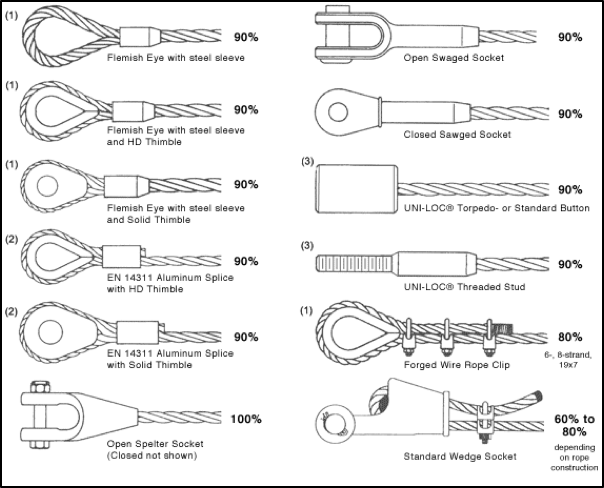Wire Rope Terminations
By Colin Rice
What impact does a termination have on the safe working load of the wire rope?
This is the fourth article of Part 1 of our Technical Series on Wire Rope. Click here for an outline of the entire Technical Series on Wire Rope.
Wire ropes used on drill rigs for hoisting of drill rods or casing have to be terminated at both ends, the one end is fixed at the drum of the hoist and the other end must be terminated so that the rope can be connected to a hoist plug or other lifting tackle.
On some hoists, the drum has a drum pocket into which the wire rope locates. On other hoists the rope is clamped to the drum. Whatever method is used the termination or anchor provided must be secure and there must be no way that the termination can loosen or separate.
Figure 1 illustrates a number of rope terminations together with the efficiency of the termination.
Swagged terminations and spelter socket terminations are probably the most commonly used for drill rod hoisting. Swagged connections have an efficiency of approximately 90% while a spelter socket has an efficiency of 100% - these factors effectively re-rate the safe working load of the system and must be factored into the calculated maximum load that the system can lift.
Figure 1: Some common wire rope terminations
Rope clips (Crosby clamps) are also common but have an efficiency of only 80%. Very seldom are the clamps correctly fitted and tightened and so these must not be used to terminate a hoist rope – they can be used on wireline ropes but definitely not on hoist ropes. Wedge sockets are also popular but they suffer from the same efficiency limitation as rope clips.

